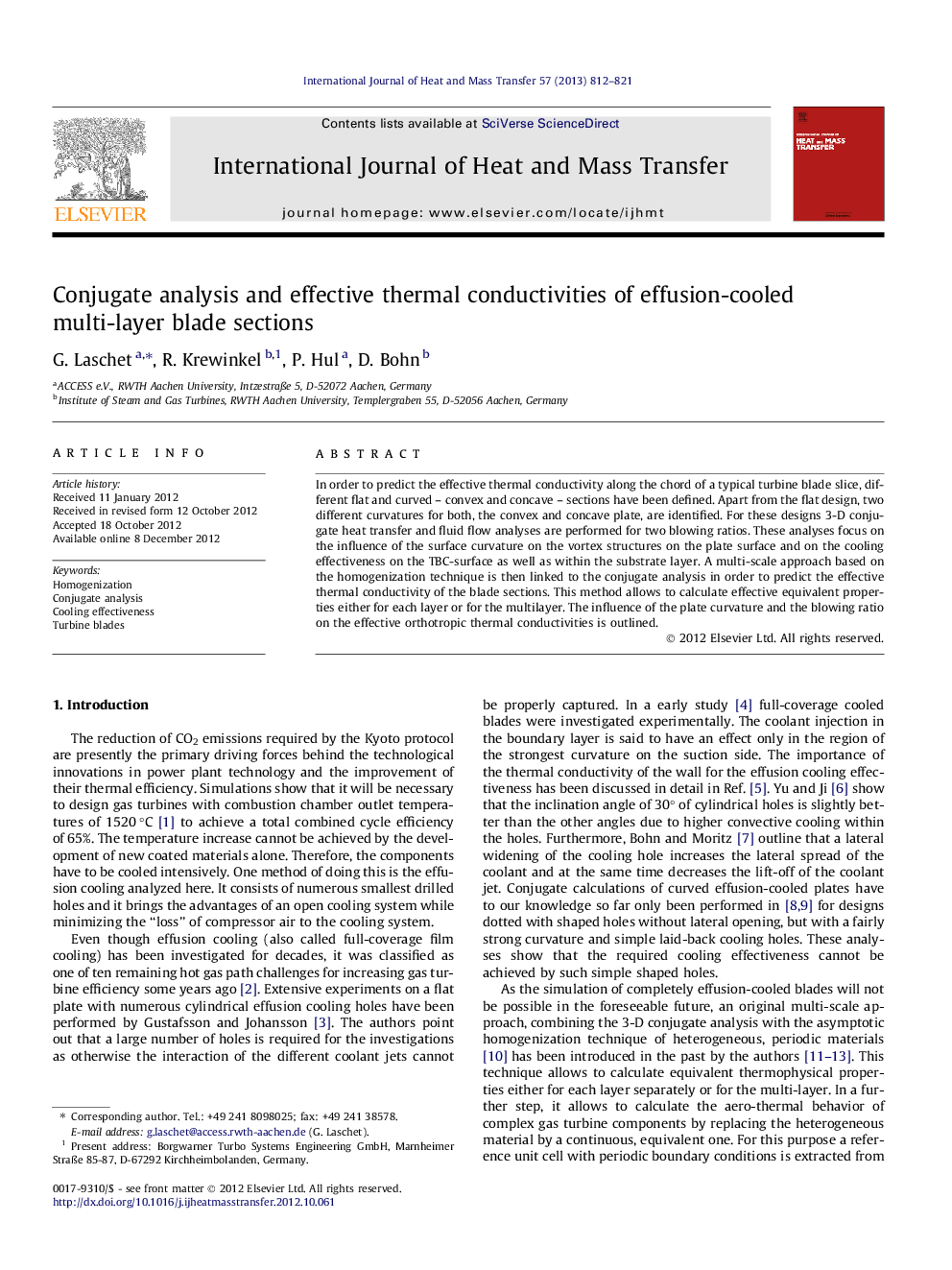| Article ID | Journal | Published Year | Pages | File Type |
|---|---|---|---|---|
| 7059147 | International Journal of Heat and Mass Transfer | 2013 | 10 Pages |
Abstract
In order to predict the effective thermal conductivity along the chord of a typical turbine blade slice, different flat and curved - convex and concave - sections have been defined. Apart from the flat design, two different curvatures for both, the convex and concave plate, are identified. For these designs 3-D conjugate heat transfer and fluid flow analyses are performed for two blowing ratios. These analyses focus on the influence of the surface curvature on the vortex structures on the plate surface and on the cooling effectiveness on the TBC-surface as well as within the substrate layer. A multi-scale approach based on the homogenization technique is then linked to the conjugate analysis in order to predict the effective thermal conductivity of the blade sections. This method allows to calculate effective equivalent properties either for each layer or for the multilayer. The influence of the plate curvature and the blowing ratio on the effective orthotropic thermal conductivities is outlined.
Related Topics
Physical Sciences and Engineering
Chemical Engineering
Fluid Flow and Transfer Processes
Authors
G. Laschet, R. Krewinkel, P. Hul, D. Bohn,
